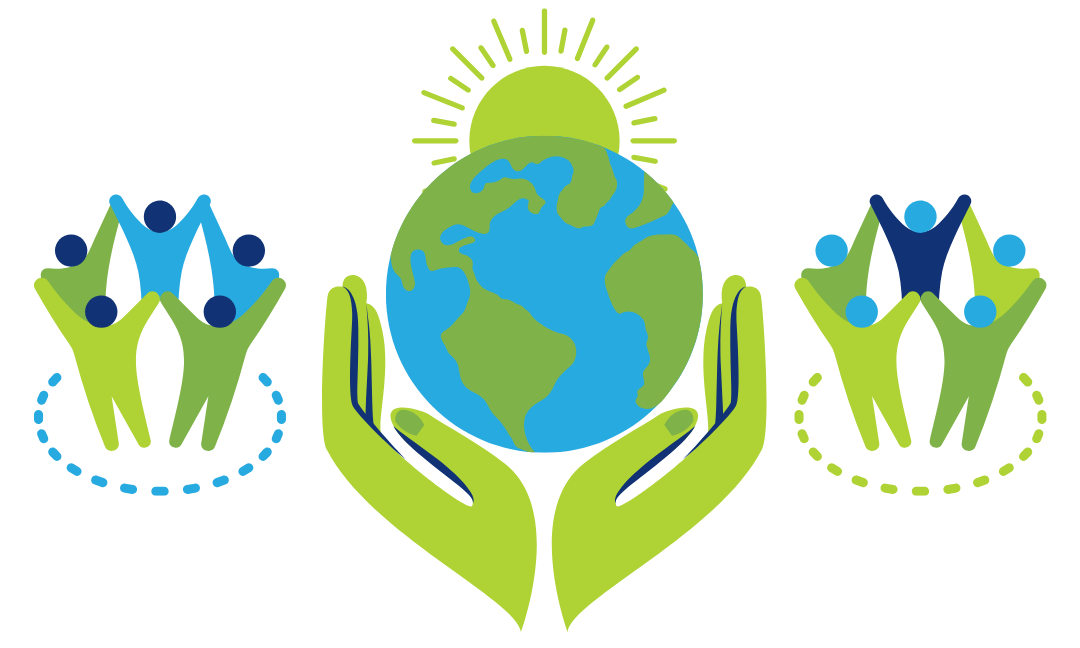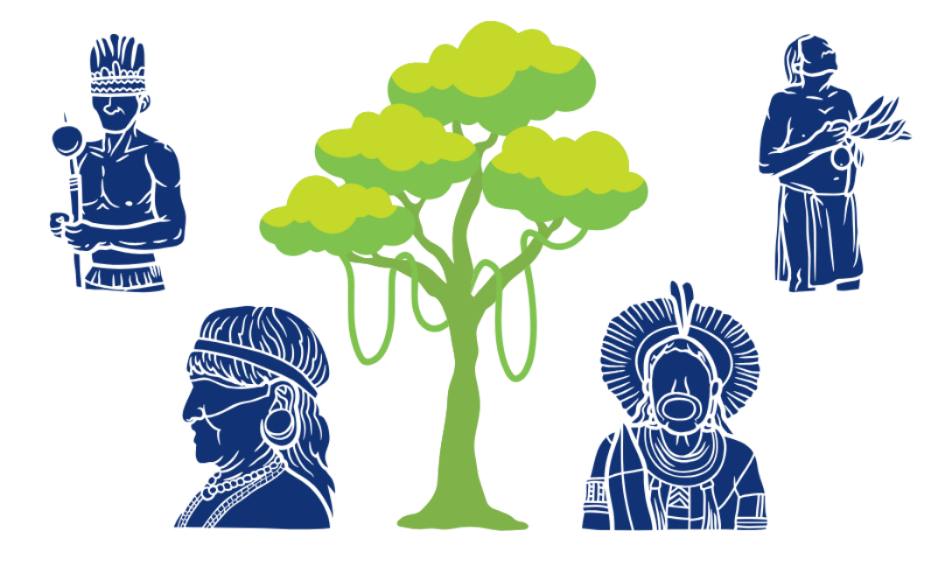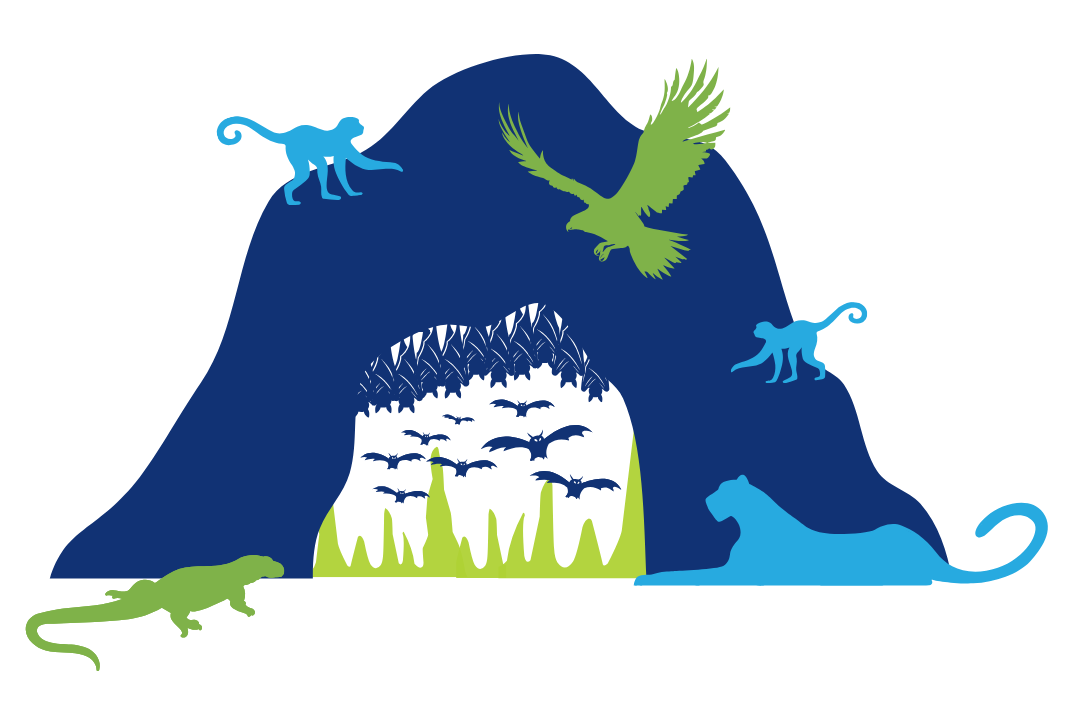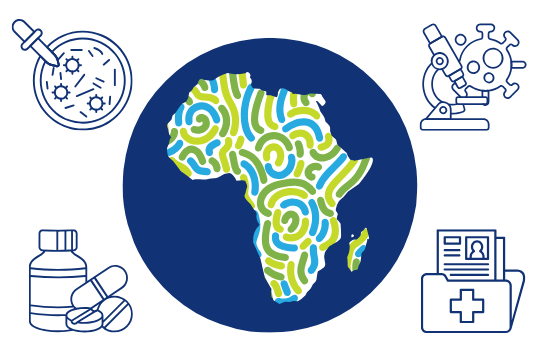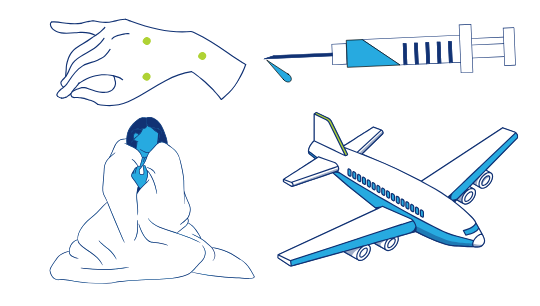
Smallpox may be gone but it’s got a cousin called mpox, and that virus is now spreading fast across parts of Africa.
As of October 2024, this mpox outbreak had infected more than 40,000 people, mostly in the Democratic Republic of Congo, according to the Africa Centres for Disease Control and Prevention. More than 1,000 people have died from the infection. The World Health Organization (WHO) declared mpox in the Democratic Republic of Congo and neighboring countries to be a Public Health Emergency of International Concern in August 2024.
Officials are distributing smallpox vaccines to try to control it. The viruses are closely enough related so researchers believe that modern smallpox vaccines can protect people safely against mpox. But the rollout is slow. It’s not clear why the virus has started spreading in households, but it’s infecting and killing more and more children.
To make matters worse, people are desperate for medicines to prevent infection and help treat symptoms, which include fevers and a rash. They’re seeking antibiotics, which cannot treat a virus. This inappropriate use of antibiotics can drive drug resistance.
This is the second time mpox has been declared a public health emergency by the WHO since 2022. A slightly different strain of mpox has been spreading since then through close contact, often sexual and often among men who have sex with men. Mpox is even now showing up in new cities and countries in North America and Europe.
Nodar Kipshidze, Senior Research Analyst at the One Health Trust, says the virus spreads easily because people often don’t know they have it. It’s also not clear where it originally came from, although small rodents and other mammals can spread it. In this episode of One World, One Health, Nodar tells us mpox is causing a lot of confusion, and we need to ensure we learn from previous outbreaks and share resources globally to stop the spread and save lives.
Maggie Fox 00:00
Hello and welcome to One World, One Health where we chat with people working to solve the biggest problems facing our world. I am Maggie Fox. This podcast is brought to you by the One Health Trust with bite-sized insights into ways to help address challenges, such as infectious diseases, climate change, and pollution. We take a One Health approach that recognizes that we are all in this together and everything on this planet — the animals, plants, and people, and the climate and environment — are all linked.
One good example of a One Health problem is when an infection jumps from animals to people. This has happened with a virus called mpox. It infects rodents native to Africa and occasionally infects people. It is a distant relative of smallpox, but luckily, not as deadly. However, it is contagious, and two different types of mpox called clades have been spreading across Africa and around the world.
This is another example of a One Health issue — an infection anywhere can very quickly become an infection everywhere. The World Health Organization (WHO) has declared a public health emergency of international concern. More than 30,000 cases have been reported, with close to 1000 deaths, in the Democratic Republic of the Congo (DRC) alone.
In this episode of One World, One Health We’re chatting with Nodar Kipshidze, a senior research analyst at the One Health Trust.
Nodar, thank you for joining us.
Nodar Kipshidze 01:29
Yeah, thank you for having me.
Maggie Fox 01:30
Nodar, this is a really confusing situation. Two different outbreaks are going on. Can you try to explain that?
Nodar Kipshidze 01:39
Yes, that is a great question to start with. The mpox situation is confusing. We had this 2022 mpox outbreak that was at a global scale and shifted our understanding of mpox epidemiology. Probably before that, it mostly circulated in these endemic regions in Western and Central Africa. With the 2022 outbreak, we also had a global expansion that was also affecting specific key populations, such as men who have sex with men, primarily.
Now, the ongoing situation is in the DRC, where there is this outbreak of a separate clade of mpox. So, clades — you can think of them as cousins. These are very closely related viruses, but not the same. So, this second outbreak began in the spring of 2023 (which is our best estimate as to when this first happened) and this outbreak is different because there are also other ongoing political and civil unrest issues in the DRC. We have both clade one circulating (from) this newer outbreak, but we also have clade two from the 2022 outbreak potentially circulating as well, and it’s causing a lot of unnecessary confusion, but it’s complicating the response in many ways because you have these different modes of transmission.
And I guess thirdly to that, also the concern that drove WHO to declare a second public health emergency of international concern this past August was around how quickly it started to spread to surrounding countries as well — countries that had never actually seen mpox. Places like Rwanda, for example, which is also now dealing with another urgent health emergency, which is the Marburg virus, but that is not the topic of today’s episode.
Maggie Fox 03:30
Can we talk about how mpox might have first gotten loose into the human population in the US a few years ago? It (mpox spread) was linked to pet rodents. Could rodents have been the source?
Nodar Kipshidze 03:43
That is a great question as well. So, the history of mpox is interesting. To those who are interested, I would encourage them to look up history.
The very first cases of mpox were detected in animals. This was back in 1958 at the Statens Serum Institut in Denmark. There was this lab that was producing and researching polio vaccines, and they had this outbreak of mpox. At the time, they did not know what mpox or monkeypox virus was, and that caused a lot of concern, because up until then, we had smallpox, but smallpox was thought to circulate among humans and not non-human primates.
So, this caused quite a commotion at the time to understand, “What is going on here?”
“Does smallpox have the potential to spread across other animal populations?” This was also at the same time as WHO was starting to build up a global plan to eradicate smallpox from the world.
It was not until the 1970s that the first human case of mpox was identified—in an infant in the Democratic Republic of Congo (DRC). Since then, there have been recurring outbreaks, with the virus circulating in endemic areas.
We also do have cases of travel-acquired mpox, or importation of mpox into other places. One of the best examples is — back in 2003 in the US when the mpox outbreak occurred, it affected about 50 people, and that was related to the trade of exotic animals as pets.
This brings up an important One Health conversation—how animals can carry diseases and how our choices in managing and interacting with them have direct health impacts and consequences. So, the Centers for Disease Control and Prevention (CDC) did an amazing case investigation to understand the origins of the mpox outbreak that happened in 2003. They traced it back to a pet trading show, where they had these exotic animals imported from the African continent, that is where the 2022 outbreak originated from. Again, we don’t entirely know.
Yes, there are typically these animal-to-human spillover events, but most of the ongoing outbreaks in the DRC, at least, from the latest technical reports from the World Health Organization, most of these cases now are just human-to-human transmission there. That’s not to say there might have been an initial animal-to-human transmission, but as we’ve seen, the epidemiology for this can be quite complex, and you have these many different routes and modes of transmission observed.
Maggie Fox 06:23
These symptoms can tell you a little bit about the transmission because this is a disease that can make you sick systemically, right? It can cause fever and achiness, but it affects the skin. You can get these lesions, and of course, everybody knows what smallpox did. It caused these blisters all over. Some of the pictures you see are blister-like lesions, but sometimes it is more like a rash, and you might not necessarily think it was something serious.
Nodar Kipshidze 06:52
Yeah. So, the case presentation of mpox varies drastically. So you have more of these mild or moderate cases. I would like to say these aren’t formal classifications, I would like to start with, but, these are typically people who maybe have just a few lesions or just something that really kind of presents itself as a rash. CDC did a great example, where they had, infographics to differentiate if it is a pimple, or is it potentially a lesion from mpox? Because that is how easily they could be kind of misclassified, especially if you have no other symptoms. Why would you think that you might potentially have mpox?
But then you do have more of these severe cases, where you do have a lot of lesions, very painful lesions, other kinds of systemic issues, like kind of body-wide inflammation, that might require hospitalization. So, it’s interesting in that aspect where you have this kind of wide-ranging symptomology.
Maggie Fox 07:44
So, you can see how it might spread. Because somebody does not necessarily, they are not walking around with a whole bunch of blisters all over themselves. They might have very mild symptoms, and they would unknowingly spread this.
Nodar Kipshidze 07:55
Exactly, and that is the issue, right? People might not know they have mpox and might unknowingly engage in certain behaviors that can facilitate transmission, fueling the ongoing outbreak. Despite a slowdown, particularly in the US, the 2022 outbreak has not fully subsided. We are still seeing around 200 cases per month, which is a lot because mpox is not endemic to the US. But this is not unique to the US; we are seeing similar trends worldwide.
Maggie Fox 08:36
So, it sounds to me like there are different vulnerable populations in different countries, in the US and Europe, it is one population, and that would mostly be men who have sex with men. But in some countries in Africa, it has been babies and kids. What is going on here?
Nodar Kipshidze 08:54
I think part of this, again, speaks of the complexities of mpox transmission. In the 2022 outbreak, the virus took hold of sexual networks and found a new way to efficiently transmit between humans through close, intimate contact, whether sexual or non-sexual. But that does not necessarily preclude that.
Close contact can occur in other settings as well, like for example, the household, in schools, or just fomite transmission through inanimate objects including things like bedding or clothes that might be shared with somebody who has mpox and shared with somebody else who does not have it. This can also facilitate another mode of transmission.
So, with the outbreak in the DRC, we are seeing a lot of cases among younger children, especially in areas such as refugee camps or camps for internally displaced persons (IDP). We are seeing a predominant burden, or case burden, among younger children. This speaks of another factor — the right of residence.
In IDP camps, where everyone is very close together, sanitary conditions may not be high. Resources for things like bedding are limited, so these are all kinds of factors that can play to the persistence of any infectious disease, not just mpox.
Maggie Fox 10:16
The timing of the appearance of mpox is a little suspicious— just as smallpox was being eradicated by vaccination, mpox was appearing. I am old enough to have been vaccinated against smallpox. A lot of people now have it. Could the two things be related? Could people who were never vaccinated against smallpox have zero immunity against mpox viruses and thus be vulnerable to this new virus?
Nodar Kipshidze 10:41
Yes, so that is a great question. There was a small study done back in the 1980s by the WHO that showed the potential for resurgence or future outbreaks of mpox based on potential declines in population-level immunity against smallpox.
Because after the eradication of smallpox, there was not this push to continue vaccinating because they did not necessarily see the need to do that.
More recently, there was a study done by the Bansal Lab group of Georgetown University that kind of followed or had the same findings, which showed that there is a large heterogeneity (major differences) in current population immunity against orthopoxviruses in general. The question is, for those who were vaccinated against smallpox, the vaccines we are using today for mpox were originally designed against smallpox, and they are the same vaccine. It is just an indication of the kind of labels that regulatory agencies put on. It has been expanded to include mpox as well.
Maggie Fox 11:40
Because the good thing about this whole family of viruses is that you can vaccinate against one and protect against all of them.
Nodar Kipshidze 11:47
Yes, at least that is the current strategy. The evidence of actual vaccine effectiveness against mpox is very limited on both pre-exposure prophylaxis (attempt to prevent disease), so before somebody gets infected, as well as post-exposure prophylaxis (vaccinating someone who may have been exposed to prevent disease progression). However, in both instances, the data is limited.
With the 2022 outbreak, however, we vaccinated many people and gathered more data, suggesting that the vaccine is effective. But again, Yet, since these vaccines were initially developed without ethically testing them by infecting people with mpox or smallpox, the initial data relied on correlates of immunity—indirect indicators or proxies—to estimate how effective the vaccine might be.
Maggie Fox 12:47
So how do you think the world’s been handling this outbreak, Nodar?
Nodar Kipshidze 12:50
I think for me, at least from somebody who works or does research in public health, the COVID-19 pandemic showed us, how the world and different sectors of industry could come together to create these life-saving vaccines and therapeutics quickly. But then the issue was, how do we distribute those resources to everybody and not necessarily hoard vaccines?
We did see that with the COVID-19 vaccines, where many low-income countries, unfortunately, did not have immediate access but had very delayed access to these vaccines. With mpox, we have vaccines that have been developed for quite some time. We have quite a lot. But unfortunately, again, it is the same story. We did not necessarily learn our lesson the last time.
And you know, there is more of an initiative now to get vaccines to places like the DRC, where they are dealing with this massive outbreak. But I do not think it is necessarily at the speed (pace) that I would like to see it at. I think they just received their first shipment of 100,000 vaccines, a week or two ago, but by the estimates from Africa, CDC, they need 10 million doses. Currently, the initiative aims for that kind of delivery of 10 million doses by spring 2025, which might be too late.
Maggie Fox 14:10
Nodar, thank you so much for joining us.
Nodar Kipshidze 14:12
Thank you for having me. It was a pleasure.
Maggie Fox 14:14
Listeners, If you enjoyed this podcast, please share it. You can learn more about this podcast and other important topics at onehealthtrust.org and let us know what else you would like to hear about at [email protected]. Thanks for joining us.
Guest

Nodar Kipshidze is a Senior Research Analyst at the One Health Trust, a first-year PhD student in Epidemiology at Columbia University, and a pre-doctoral fellow in the Global HIV Implementation Science Research Training Program, funded by the National Institute of Allergy and Infectious Diseases. His research explores how mobility, population immunity, and behavior influence disease persistence following emergence or re-emergence. Nodar aims to translate these insights into strategies for enhancing outbreak preparedness and response at various scales. He employs a diverse array of modeling techniques, including mathematical, individual-based, statistical, and spatial models, and has studied a wide range of disease systems, including mpox, HIV, SARS-CoV-2, influenza, Zika, dengue, yellow fever, and malaria.
Credits
Hosted and written by Maggie Fox
Special guest: Nodar Kipshidze
Produced and edited by Samantha Serrano
Music composed and sound edited by Raquel Krügel



